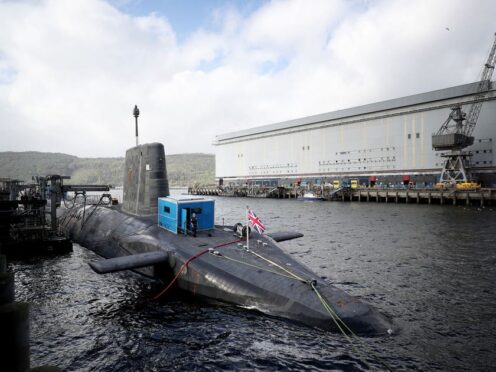Spending on the nuclear deterrent and the UK’s special forces should be scrutinised by a new committee of MPs, ministers have been told.
The Commons’ existing spending watchdog, the Public Accounts Committee (PAC), said a new panel should be established to scrutinise spending in sensitive areas.
The proposed committee could use private evidence sessions and correspondence to examine how billions of pounds are spent on highly classified projects.
The PAC warned there were “scrutiny gaps” where secret projects were not examined by existing panels of MPs and peers.
PAC chairwoman Dame Meg Hillier said: “Parliament must no longer see through a glass darkly on whether value for money is being secured on confidential expenditure.
“There are of course sound reasons why certain areas of spending must be examined in a manner appropriate to their sensitivity.
“Such sensitivity is all the more reason why the processes around its scrutiny should be made robust.
“A new select committee would address the current gaps in how such matters are scrutinised, and the PAC would be pleased to work with the Government to take this proposal forward.”
The National Audit Office has previously reported that the Defence Nuclear Organisation is forecast to spend almost £100 billion over the next 10 years.
The PAC said the Ministry of Defence’s annual update on the nuclear enterprise – which includes all the organisations, programmes and people that sustain the UK’s strategic nuclear deterrent – contained “little detail” given the scale of the project.
More than £1.1 billion is set to be spent in support of the special forces – which include the SAS and SBS – from 2025, but the MoD has resisted calls to provide more information to the Commons Defence Committee, the PAC said.
The PAC said the new select committee should have a “specific remit to consider sound financial practice and value for money” in sensitive areas which are outside the remit of the statutory Intelligence and Security Committee of Parliament.
A Ministry of Defence spokesman said: “Our nuclear deterrent continues to be the cornerstone of the UK’s national security, while our special forces conduct high-risk operations that help to keep us all safe – both of which require the highest levels of discretion and are accountable to Parliament.
“We recently outlined the full scale of the defence nuclear enterprise’s work, including how we will deliver the programmes necessary to strengthen our nuclear deterrent, supporting tens of thousands of UK jobs in the process and ensuring value for money for the taxpayer.
“These are two of the most critical areas of government spending and we note the Public Accounts Committee’s report and recommendations.”
